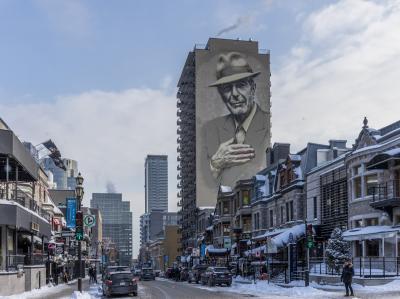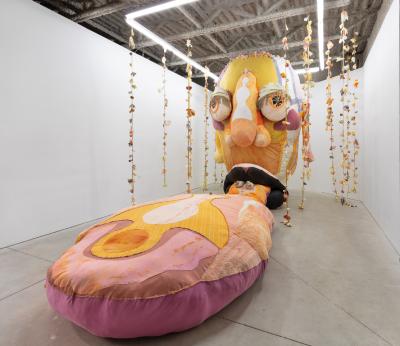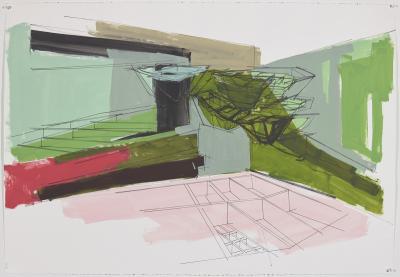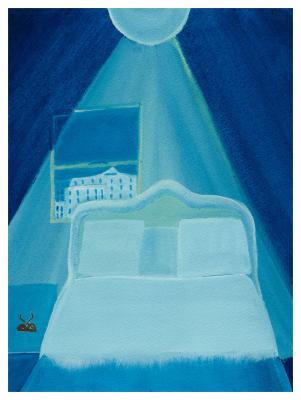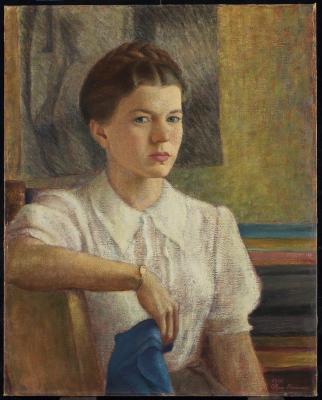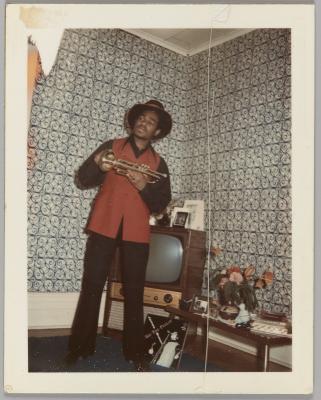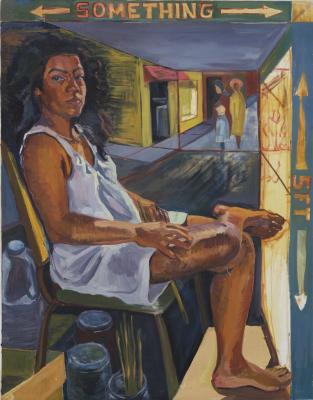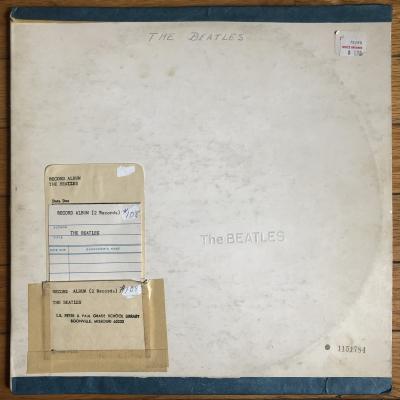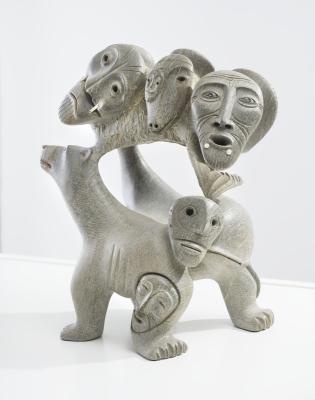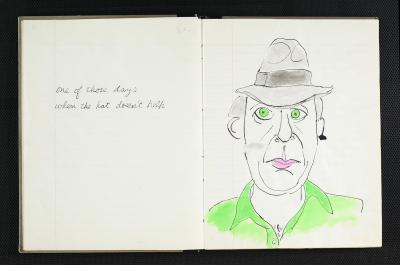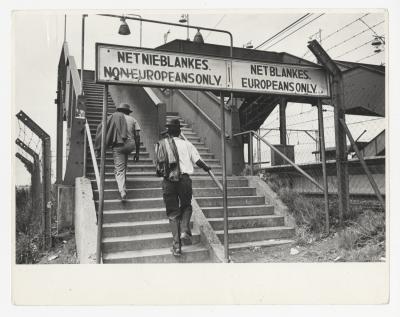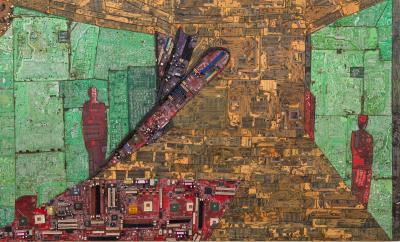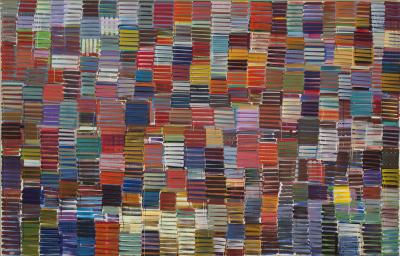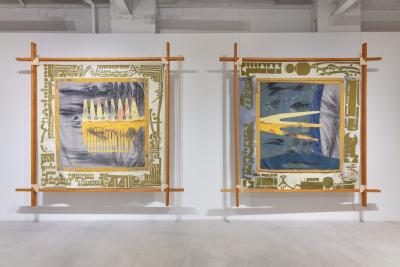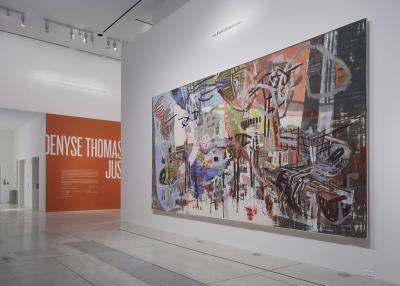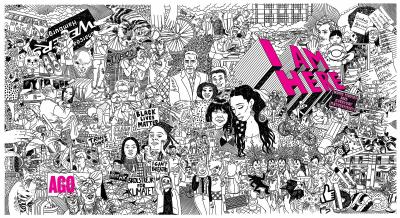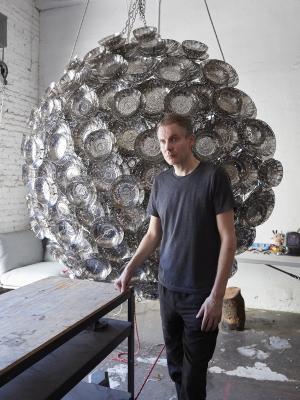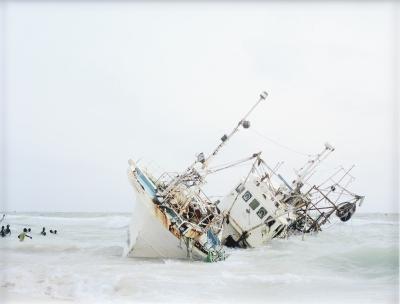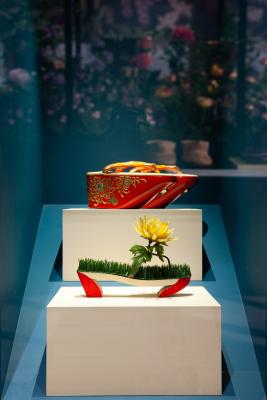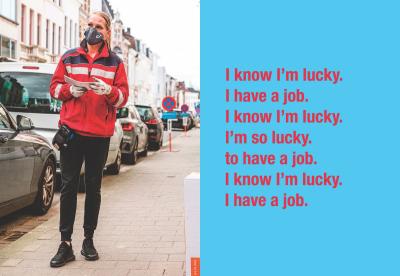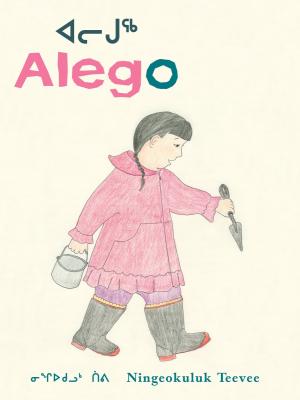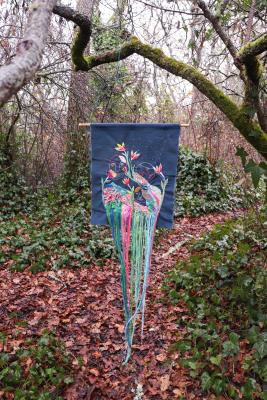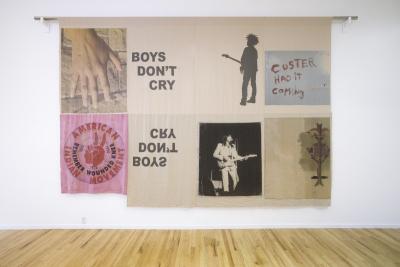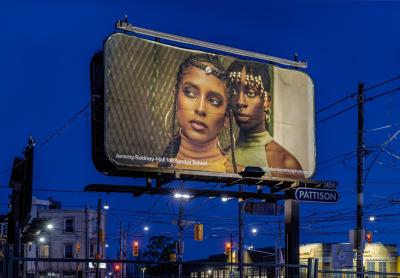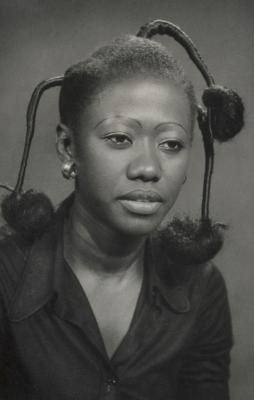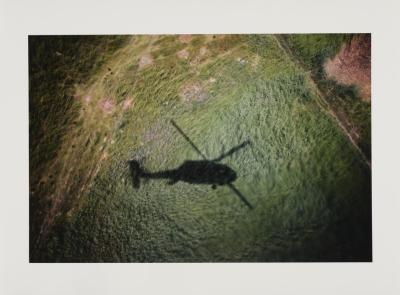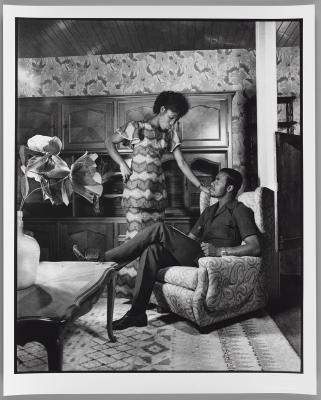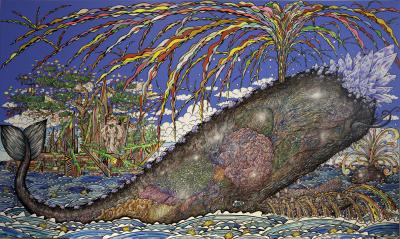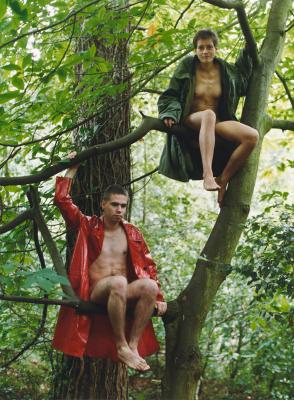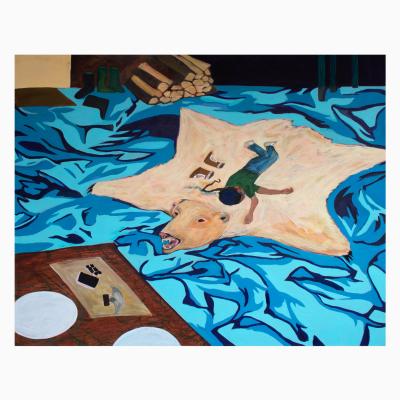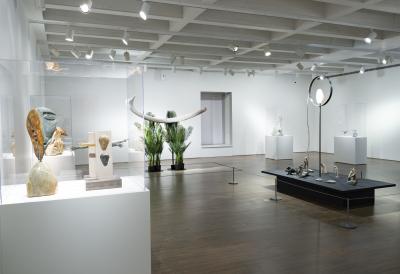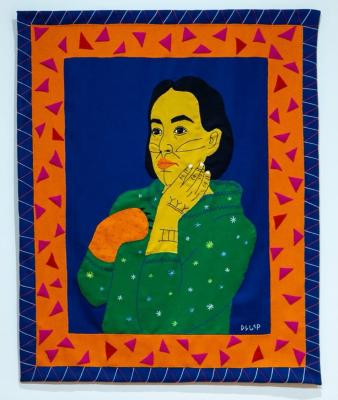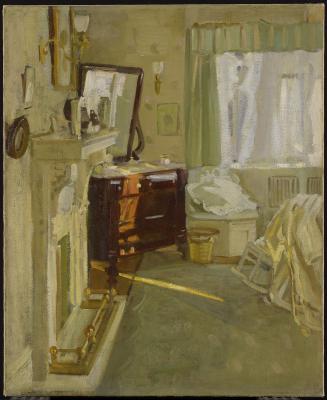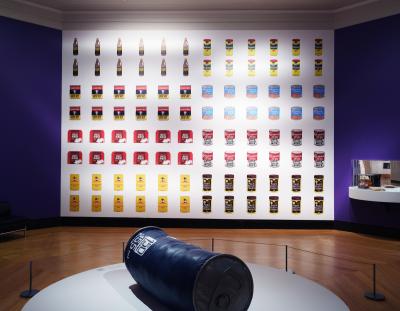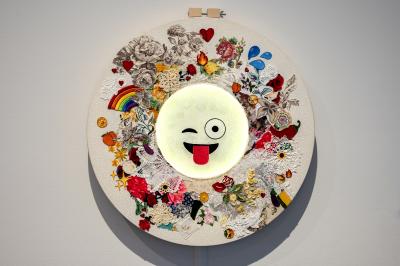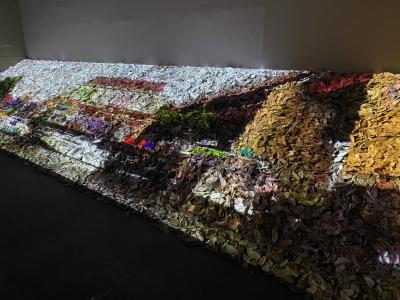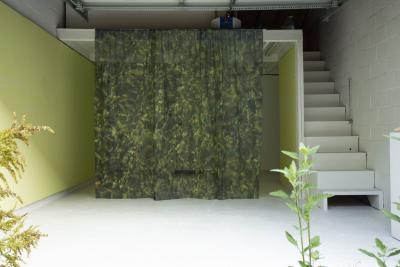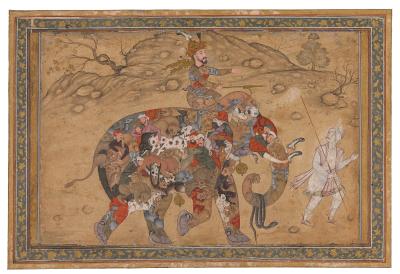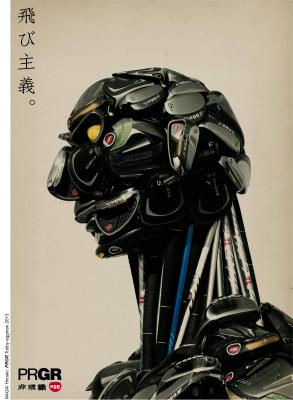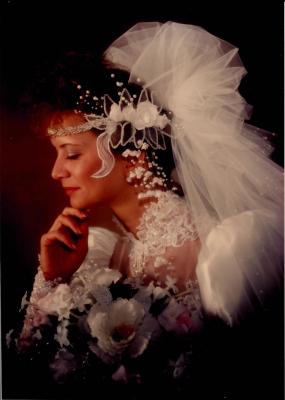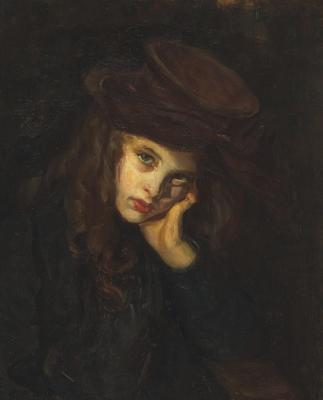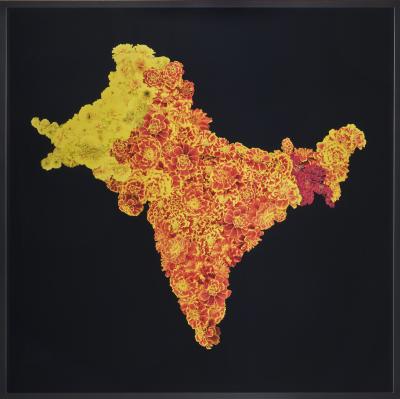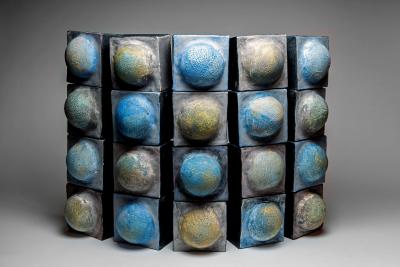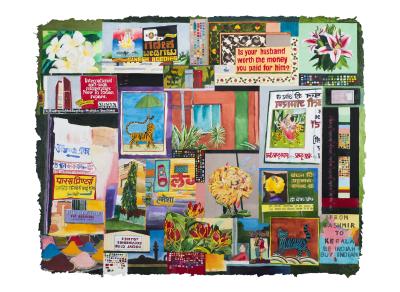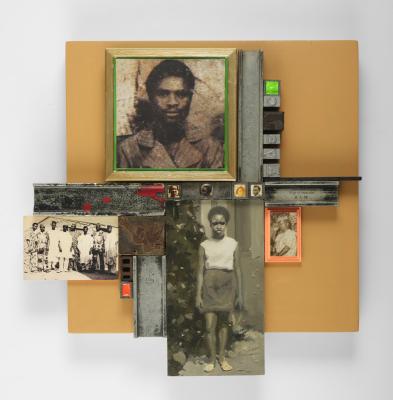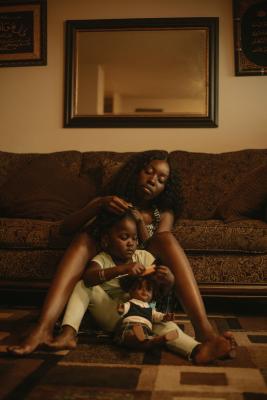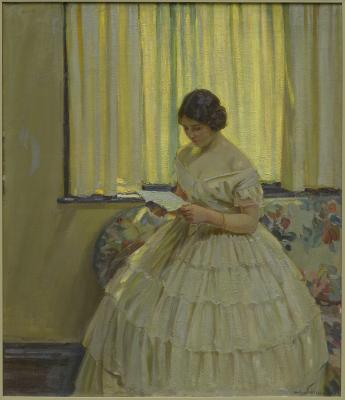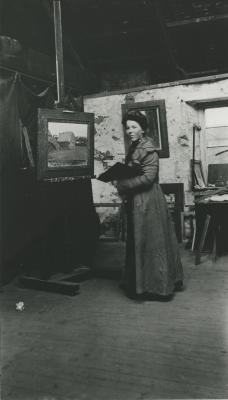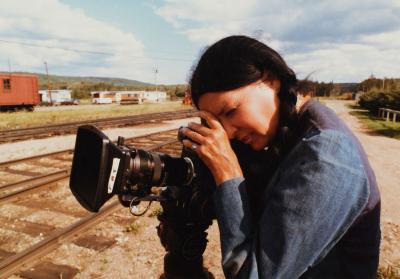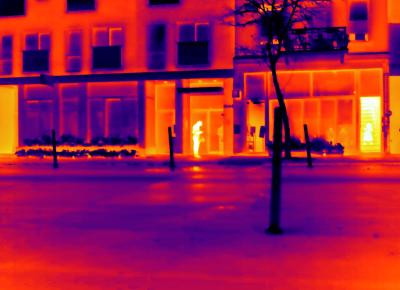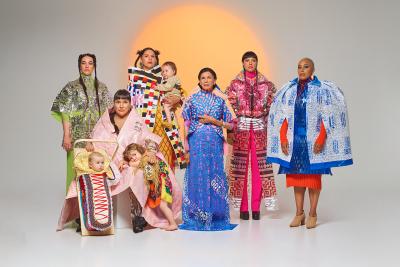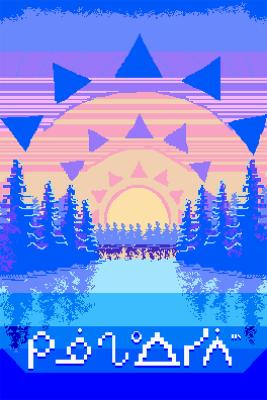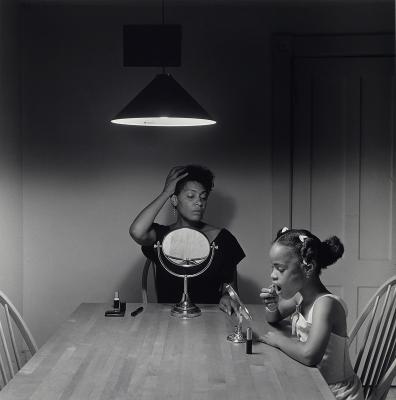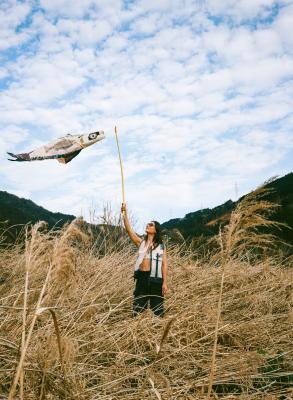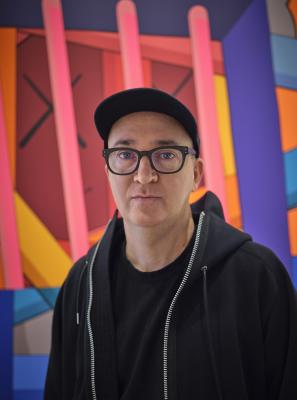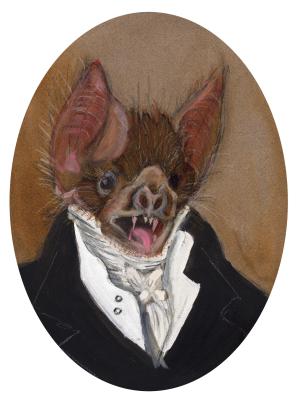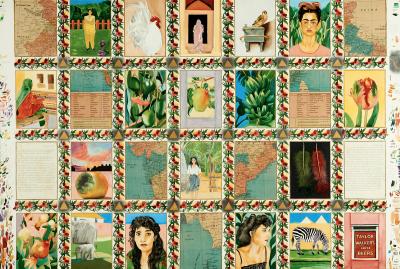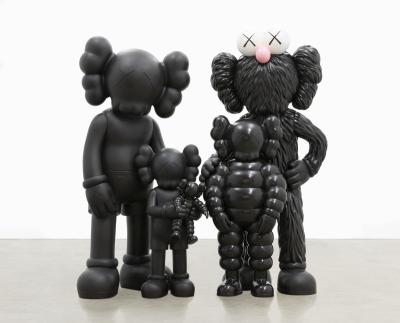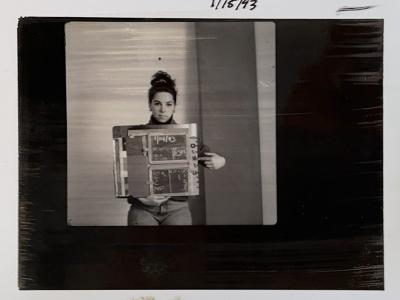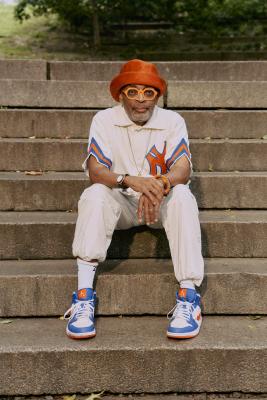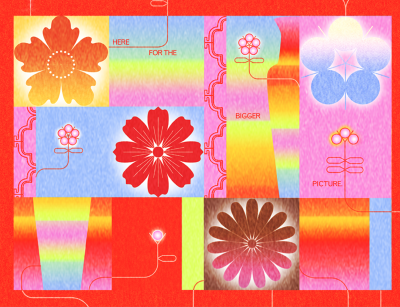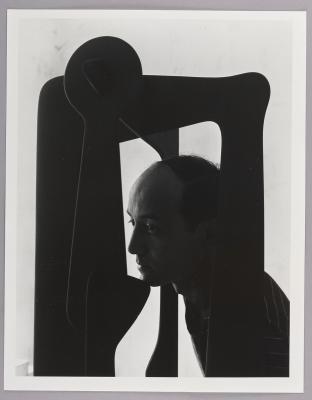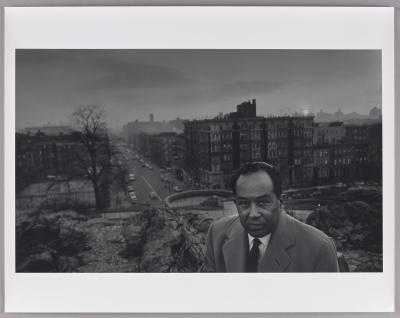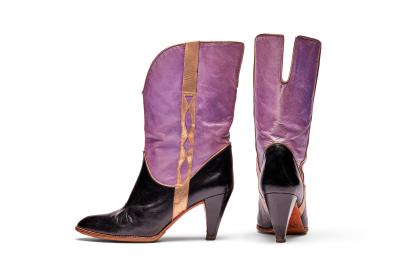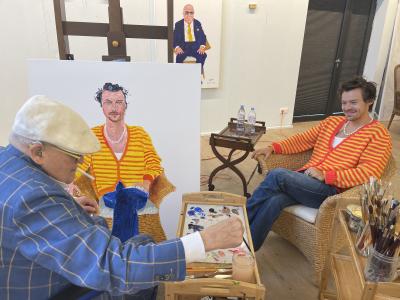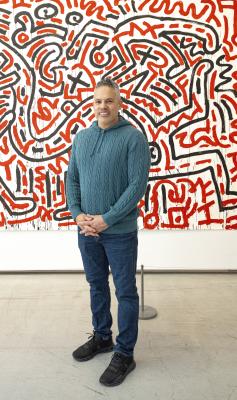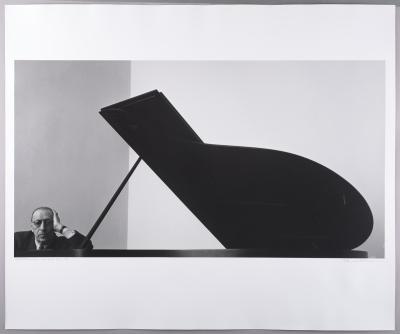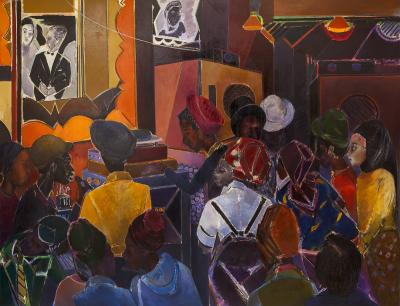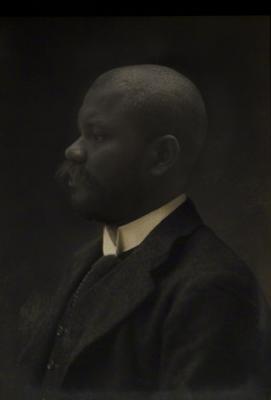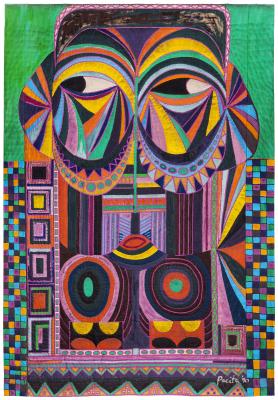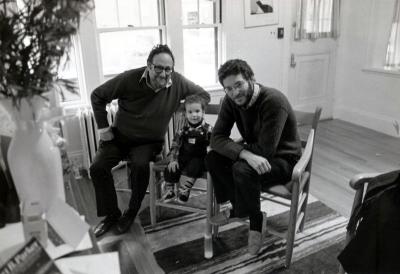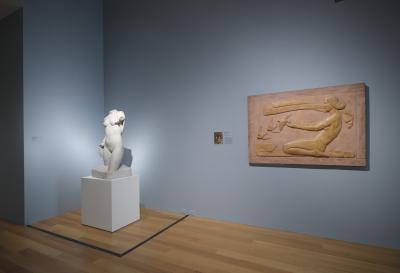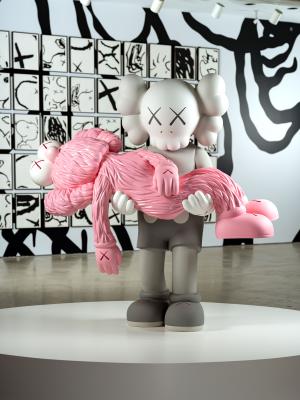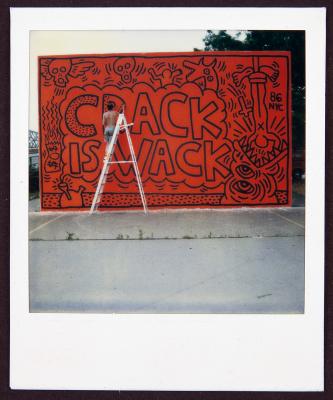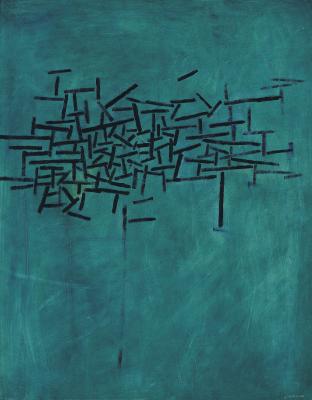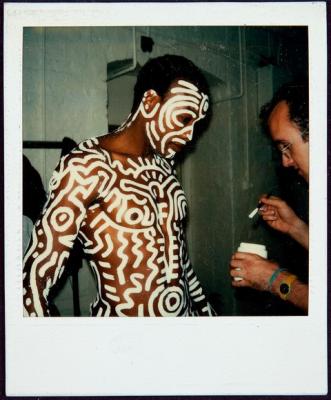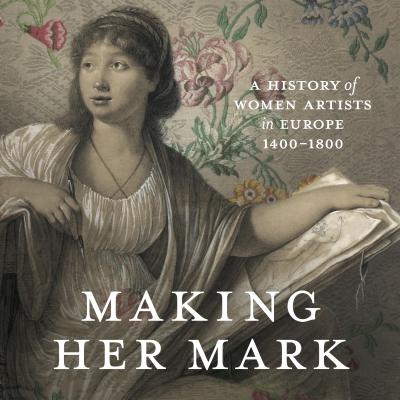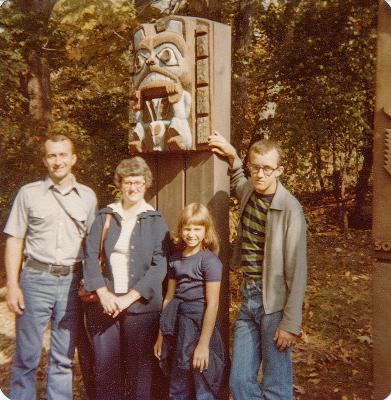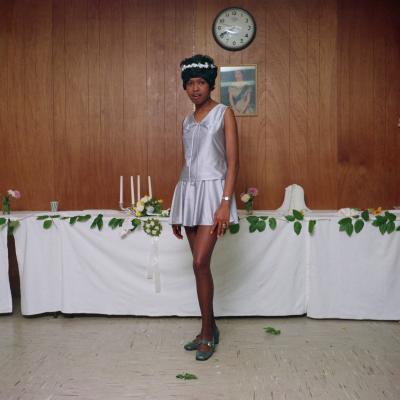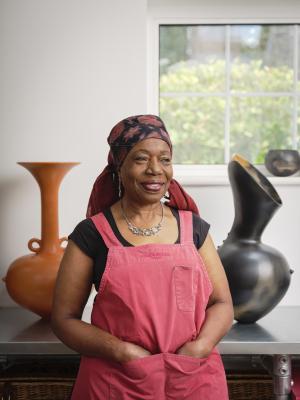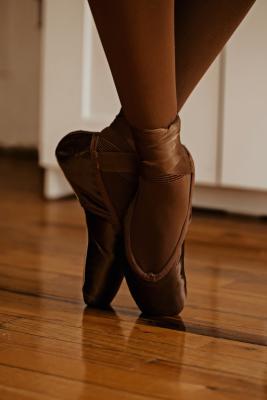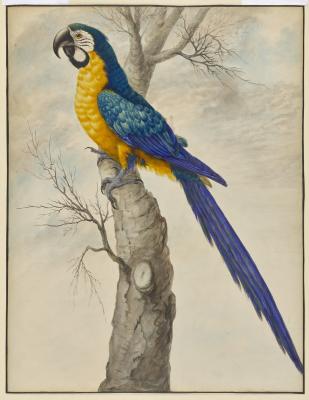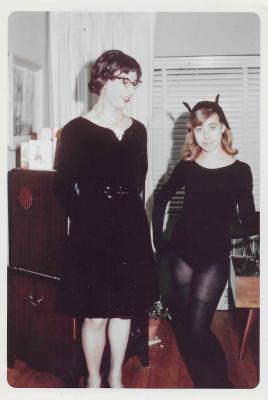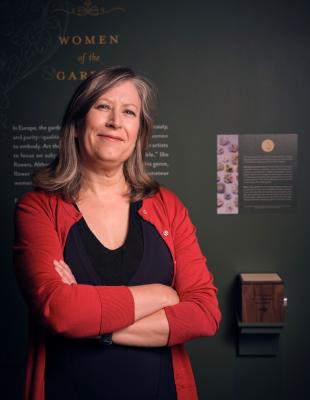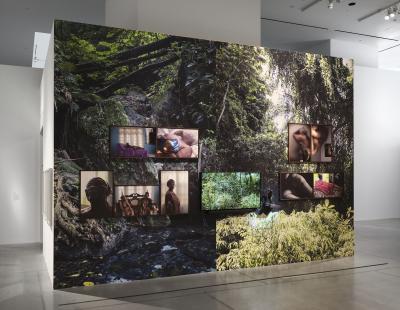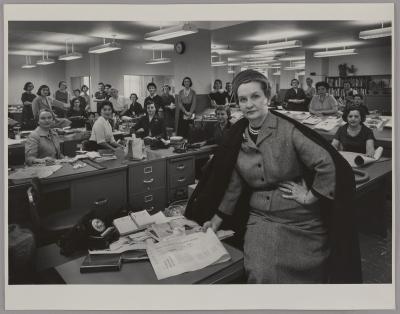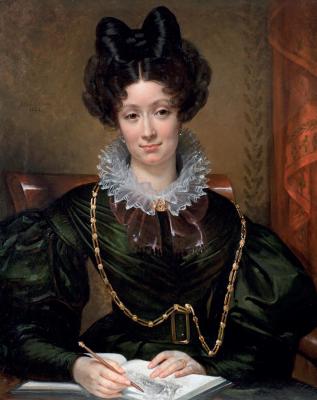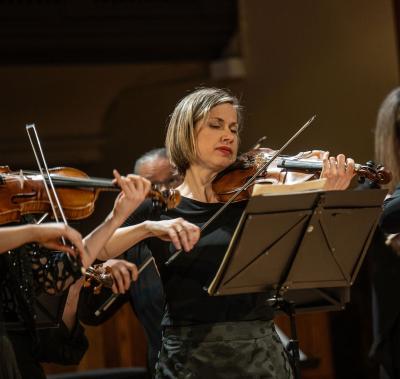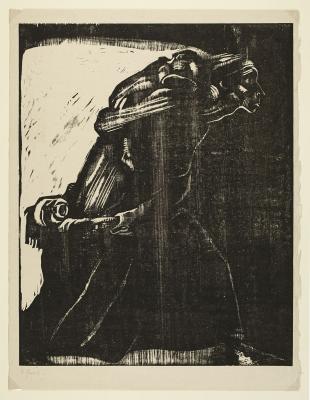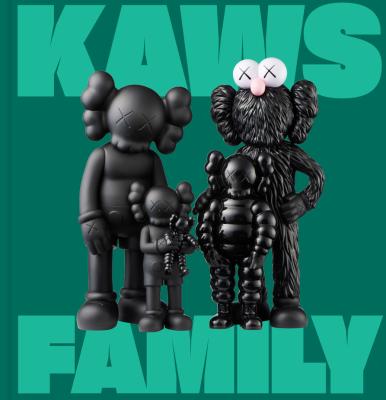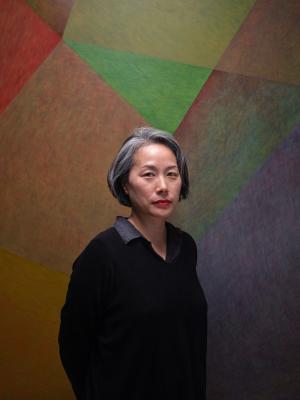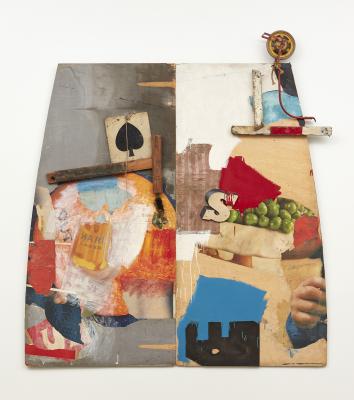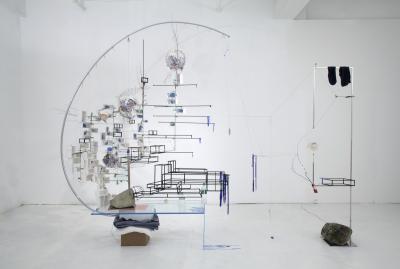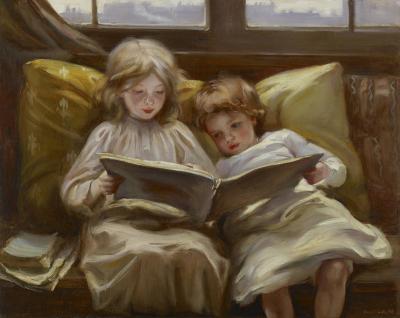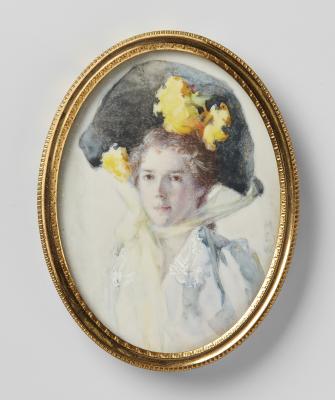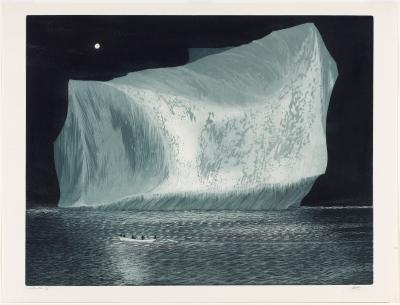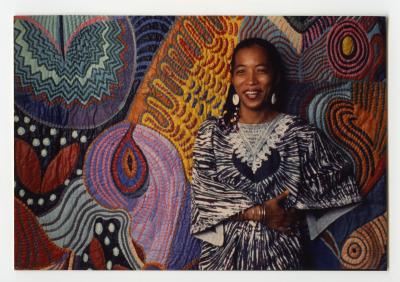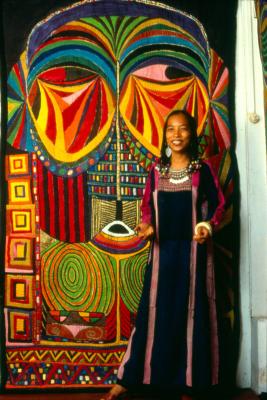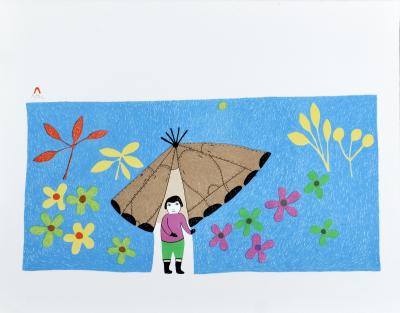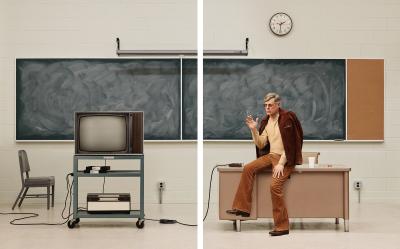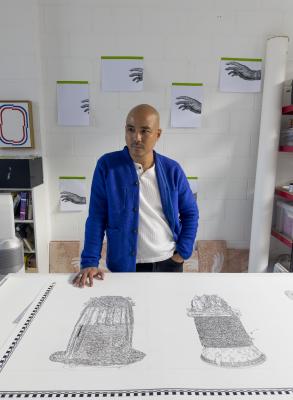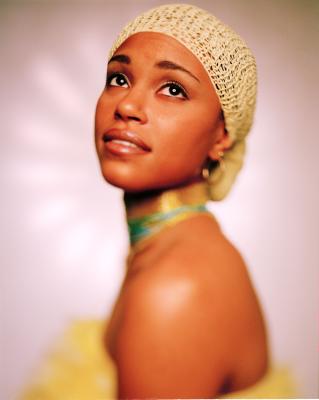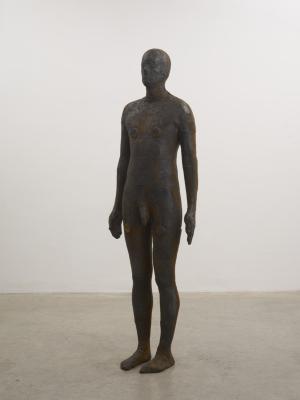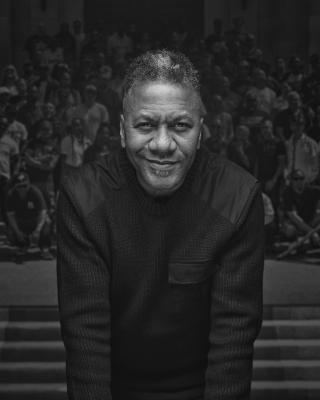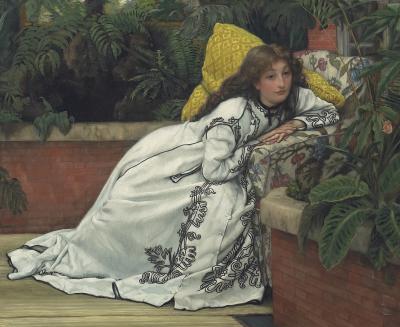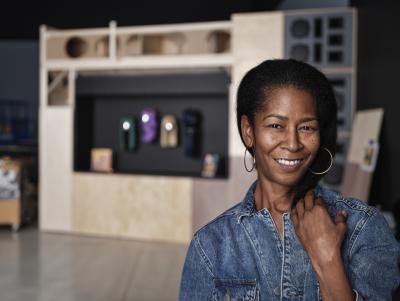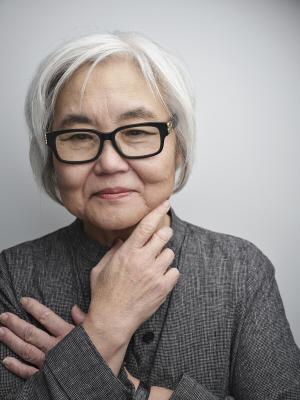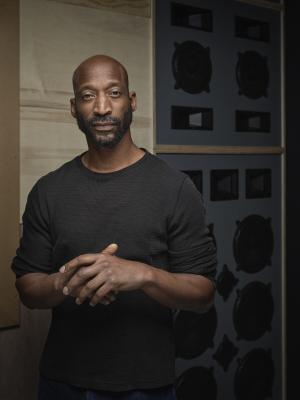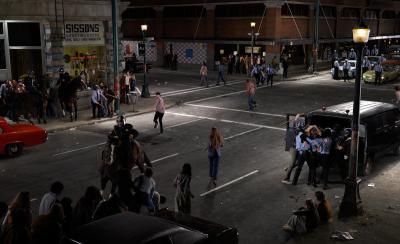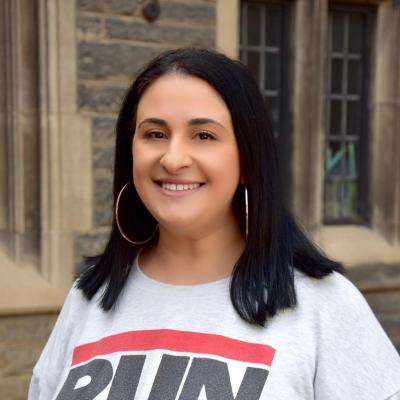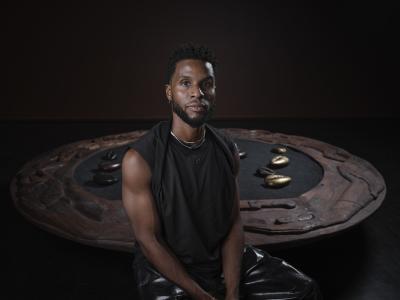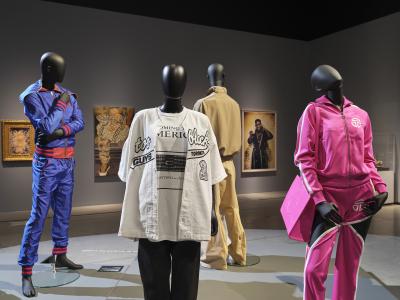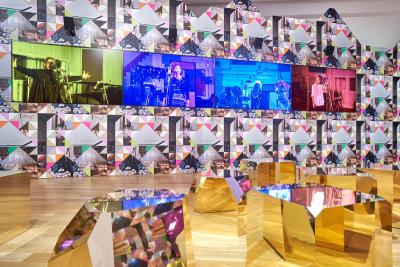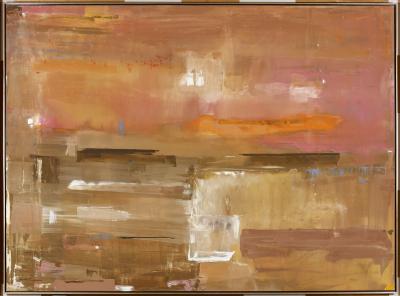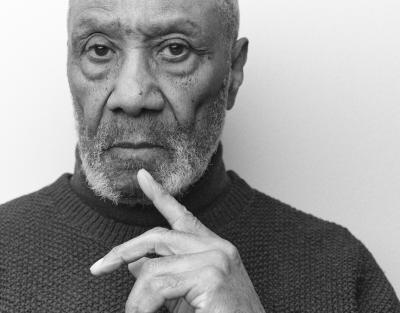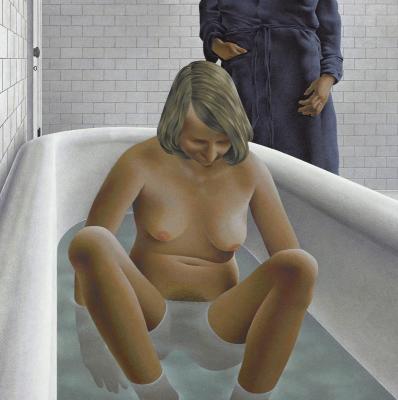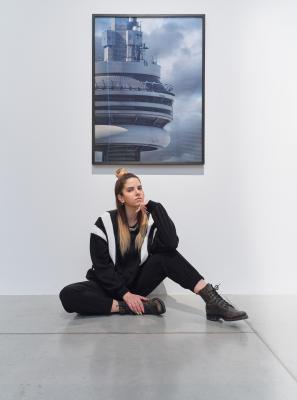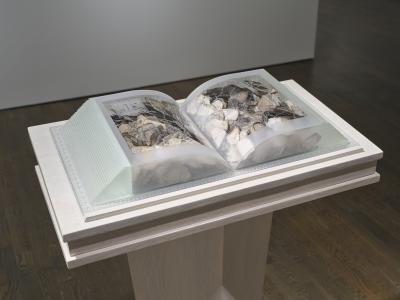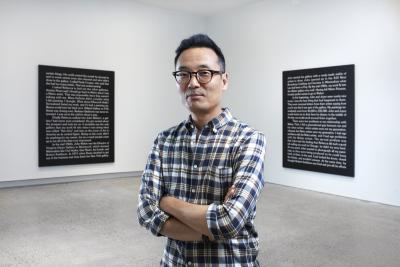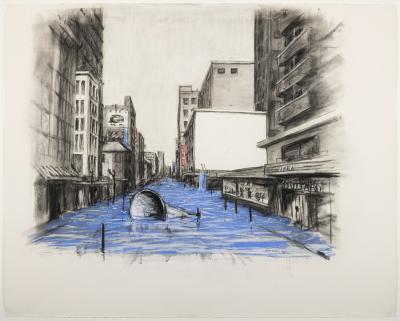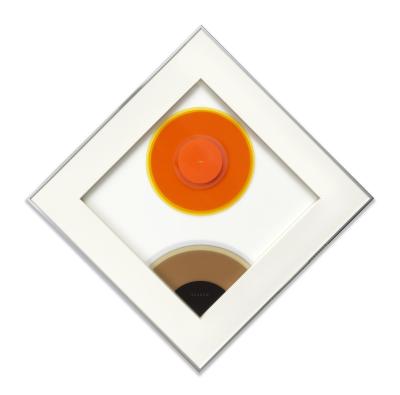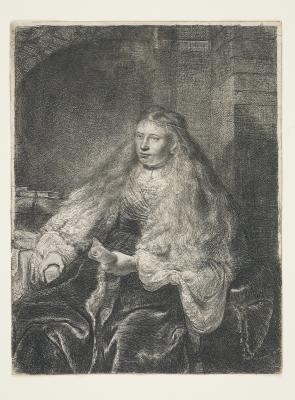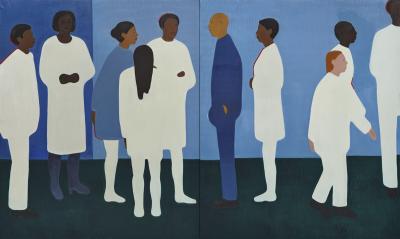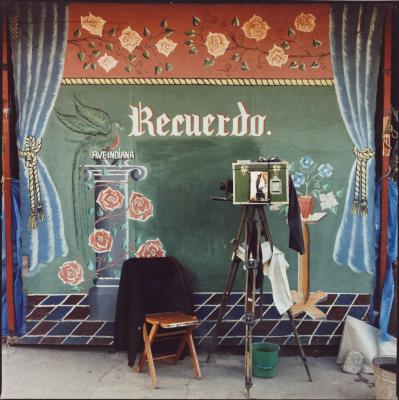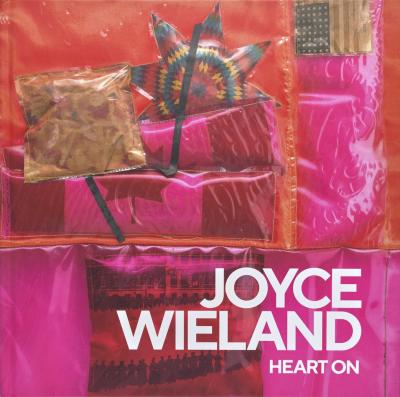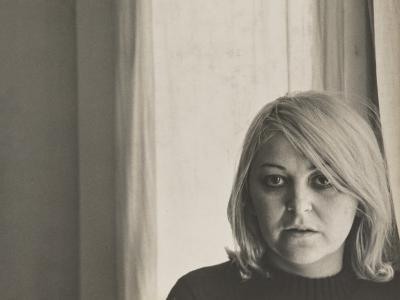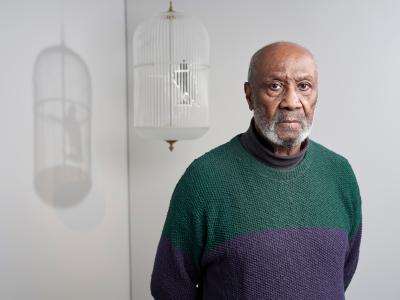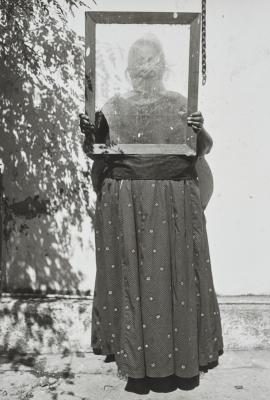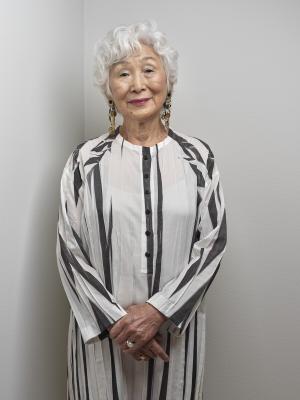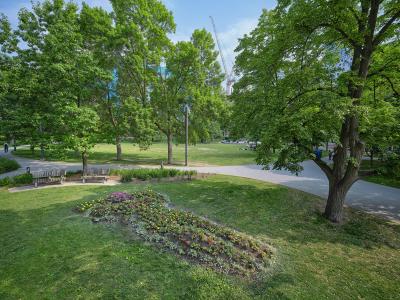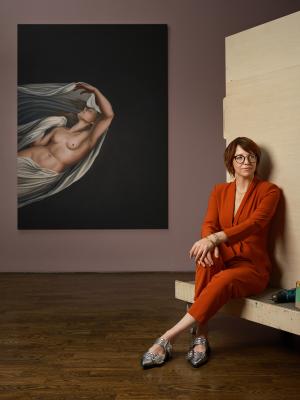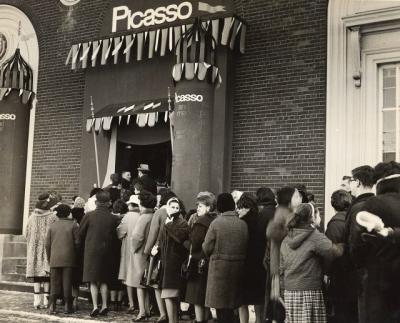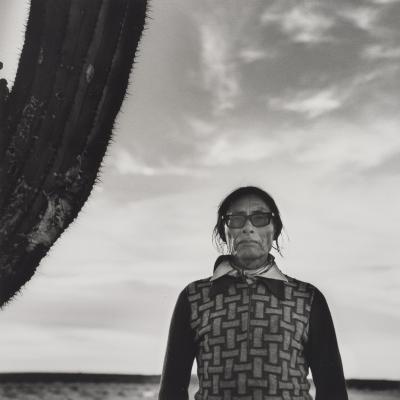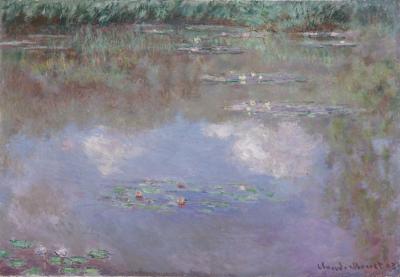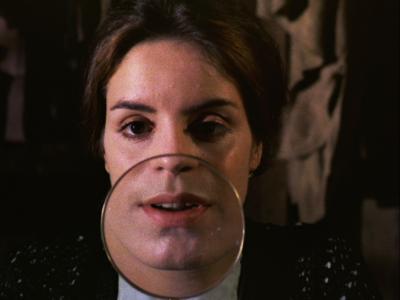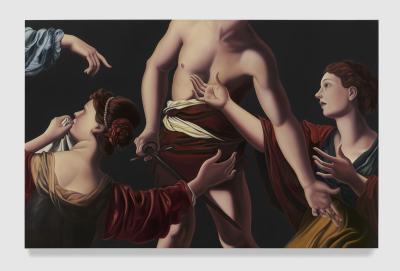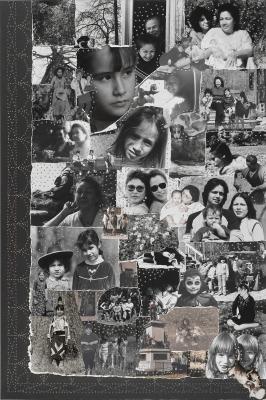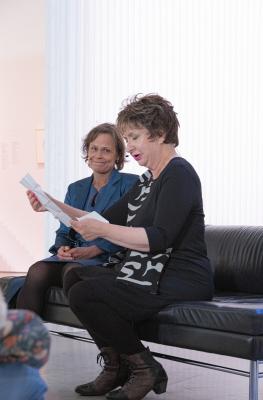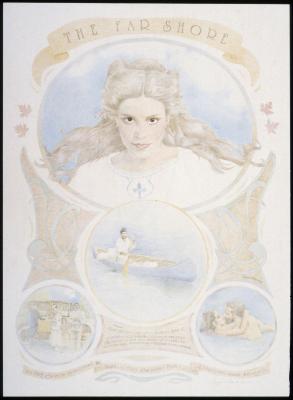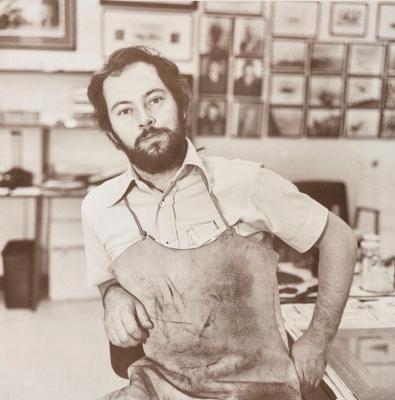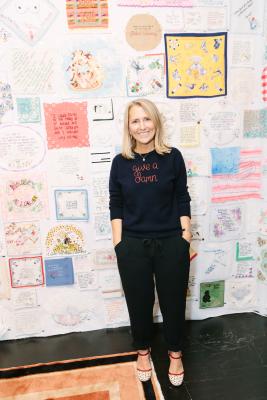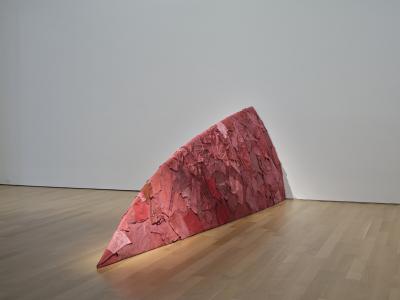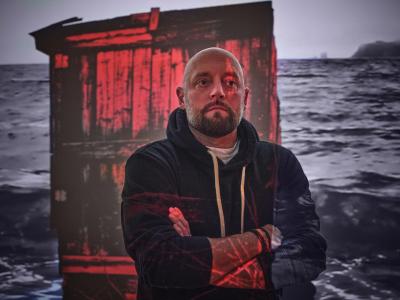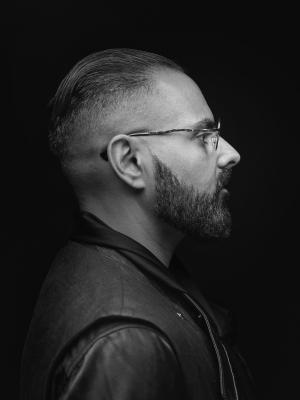Ron Terada and the Power of Text
The Vancouver-based artist discusses his expansive practice
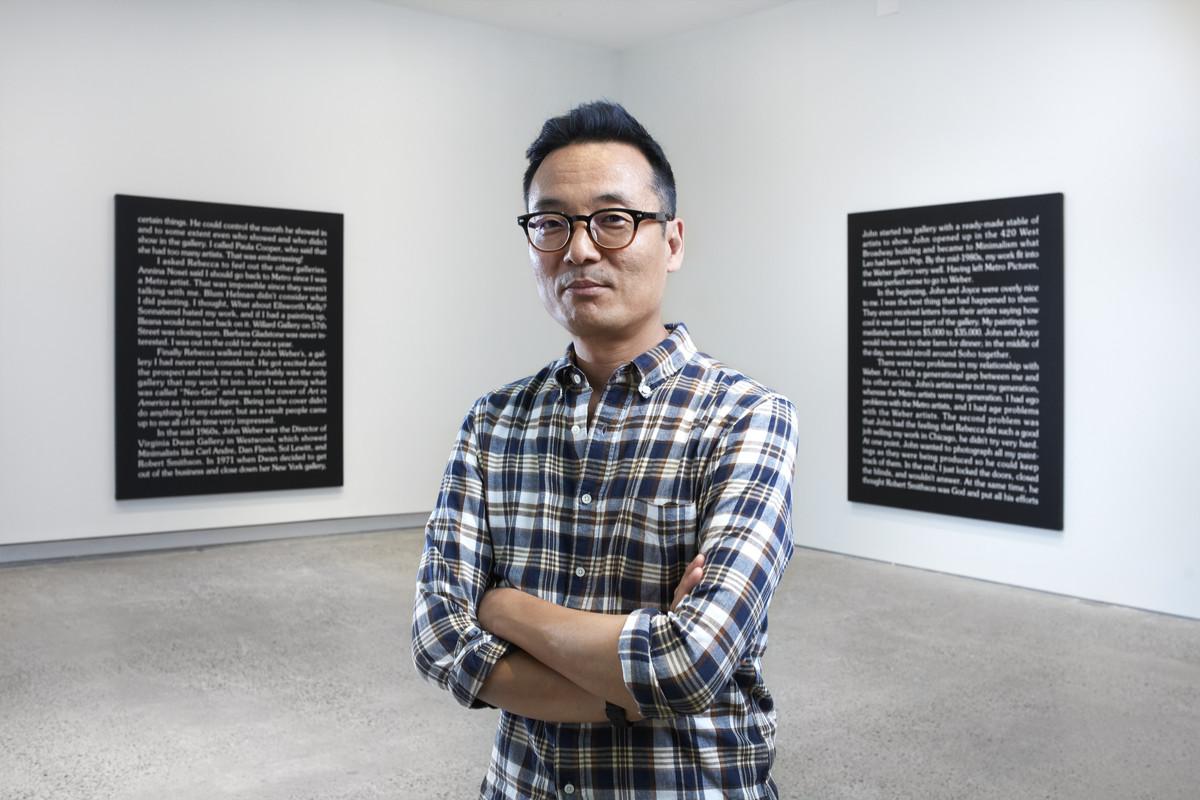
Ron Terada. Photo courtesy the AGO. Behind: Ron Terada, Jack, 2016–17. Acrylic on canvas, 14 panels, 203.2 x 162.6 cm each. Art Gallery of Ontario. Purchased with the assistance of Eleanor and Francis Shen, 2017.
Since the early 1990s, Vancouver-based artist Ron Terada has recontextualized found texts into bold artworks of various forms, including paintings, sculpture and even replica highway signs. Terada’s sculptural work Entering the City of Vancouver (2002) is featured prominently at the AGO as part of Light Years: The Phil Lind Gift, serving as the focal point upon entering the exhibition. The late Phil Lind (1943-2023) was a prolific collector of contemporary art and gifted the AGO many of the works in the exhibition. Along with Entering the City of Vancouver, works by other notable Vancouver-born artists Stan Douglas, Rodney Graham and Jeff Wall are also included. In 2018, the AGO exhibited his painting series, the Jack Paintings, which was made in response to specific excerpts from artist Jack Goldstein’s memoir.
In April 2025, Terada spoke to Foyer about how Entering the City of Vancouver came to be, the origins of his interest in typography, and his practice at large.
Foyer: Can you share the backstory of Entering City of Vancouver? What inspired you to create a replica highway sign? What commentary, if any, do you feel the work makes about Vancouver?
Terada: In 1999, Kitty Scott curated an exhibition featuring Geoffrey Farmer, Myfanwy MacLeod and myself for the Canadian Pavilion at the Melbourne Biennial. It was my first experience of being
framed as an artist from Vancouver—the premise being that the three of us represented a new, post-photoconceptual generation of Vancouver artists. Kitty titled the exhibition Universal Pictures in reference to our pop cultural leanings and interest in the myth-making movie industry.
There would be three other stagings of Universal Pictures: the Monte Clark Gallery in Vancouver (UP2), the Blackwood Gallery in Mississauga (UP3), and Plug In Gallery in Winnipeg (UP3.1). For the third version of the exhibit in 2001, I created a poster work using a photograph of the Entering City of Vancouver sign at the southern foot of the Oak Street Bridge on the edge of Richmond, the suburb I grew up in. In 2002, I would re-use this image for a magazine piece advert in Artforum and subsequently remake it as a photo work. Of course, my photo is less majestic than a Jeff Wall or Rodney Graham photograph, but I like to think it evokes a bit of Jeff’s The Crooked Path as one can see a faint trail leading to—or away from—the highway sign. More so, I wanted to draw attention to signage in the landscape reminiscent of N.E. Thing Co’s 1/4 Mile Landscape where one encounters signs off the highway that declare “start viewing” and “stop viewing.”
As much as I played on the transmission of the idea and myth of the Vancouver art scene as image, I felt the work ultimately needed to be reified and commodified as an object in a gallery setting. In 2002, I approached the city of Vancouver sign shop to fabricate the sign—this time in extruded aluminum panels—as sculpture for an exhibition at Catriona Jeffries Gallery. This original installation is still my favourite staging of Entering City of Vancouver: a lit-up highway sign mounted indoors indicating the obvious seen through a street level store front window while driving by the gallery at night.
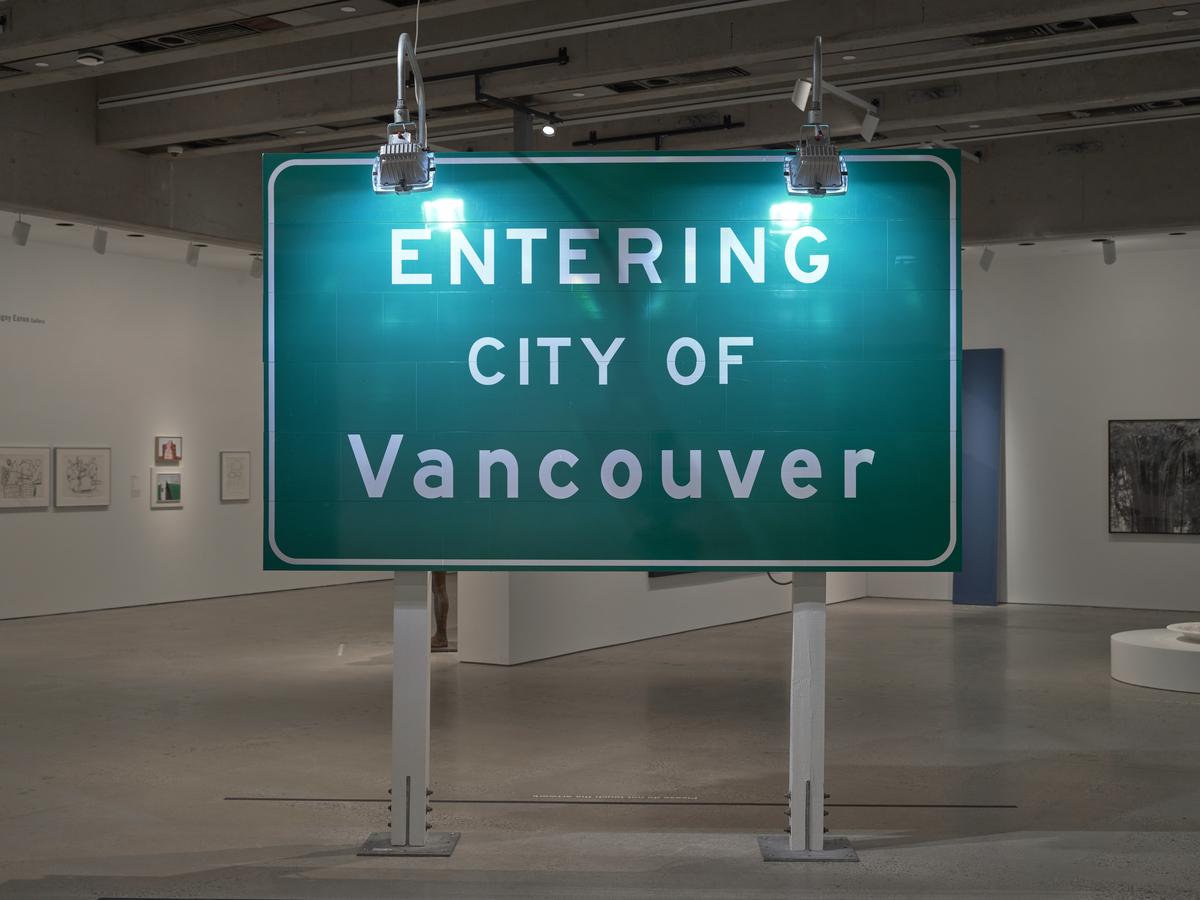
Installation view, Light Years: The Phil Lind Gift, November 1, 2024 – November 2, 2026, Art Gallery of Ontario: Ron Terada. Entering City of Vancouver, 2002. Steel, wood, paint, light fixture, light bulb, vinyl, 332.7 x 304.8 x 92 cm. Vancouver Art Gallery. © Ron Terada, courtesy Catriona Jeffries.
Text and typography are a major through line in your body of work. When did you first become interested in text as a medium, and why do you think it has remained central to your practice since the 1990s?
I was first exposed to text as a medium through conceptual art in my third year of art school, but I didn’t fully appreciate it until closer to graduation.
A little over a year after art school, I set out to try and make paintings that resembled conceptual art, or more accurately, text-based work that just happened to be a painting. Concurrently, I had come across a John Baldessari interview that helped cement things for me when he said “Why not give people what they understand the most, which is the written word and the photograph? Why fight it?” He identified it as the “lowest common denominator.” It was the exact encouragement I needed.
The ad paintings were my first stab at making text-based work. Replicating the simple exhibition announcement or advert of text on a coloured ground into a painting became at once a portrait and a document that captured the art context or art market of that time. Selecting which advert to make into a painting would also be my introduction to thinking about the ways I can utilize graphic design and typography into my practice.
In the most recent edition of your TL; DR series, you mined the internet tech-news source The Verge for extraordinary headlines, converted them to painted works and installed them alongside each other. Can you share some of your reflections about the ways in which the average person consumes news these days?
I’ve made 474 TL; DR paintings and I don’t think I’ve gleaned anything conclusive on how the average person consumes the news. The transmission of news is so constant through so many different feeds and platforms. Our screens have put us in a permanent state of distraction such that it’s really no surprise we click “I Agree” all the time.
I like to think I’m an average person, but how many people would compile news headlines for over four years to turn them into paintings?
Are there any new works, exhibitions or projects you are working on, have recently completed, or hope to work on in the near future that you can tell us about?
Sometimes working on a body of work leads naturally into the next body of work. For example, when working on the final TL; DR instalment of 325+ paintings of tech-news headlines of the year 2020, I simply took the dumb Trump headlines and drove further down the rabbit hole of political beliefs held by Team Trump (MAGA, QAnon, anti-abortionists, etc). Found texts like JESUS GUNS BABIES or TALKING TO YOU REMINDS ME TO CLEAN MY GUN would form the basis of the Black Paintings
(2023-24).
By mid-2024, I felt finished with the Black Paintings as its crazy content left me feeling drained and the looming US election was doing little to inspire confidence. There was of course the Kamala Harris bump, but it was short lived and the shocking yet not so shocking aftermath even worse. A transition wasn’t coming naturally, yet a feeling or need to retreat into hiding in search of comfort and realignment seemed obvious. Since the US election I have been working on small still life paintings! Meanwhile, there are plans in place to install my sign work from 2005. You Have Left the American Sector in spring 2025.
Light Years: The Phil Lind Gift is on view now at the AGO through November 2025. It is located on Level 2 of the AGO in Signy Eaton Gallery (gallery 224). The exhibition is organized by the AGO and curated by Adam Welch, Curator, Modern Art at the AGO.
